Abstract
Continuous surveillance of the influenza viruses isolated from domestic poultry from southern China and Hong Kong over more than 4 years resulted in the isolation of influenza viruses possessing 46 different combinations of haemagglutinin (H) and neuraminidase (N) subtypes. Of these, 43 were obtained from ducks from China. In all cases, infection appeared to be asymptomatic. The antigenic combination found most commonly in the viruses isolated was H4N6, which accounted for approximately one-quarter of the duck isolates, its occurrence being more frequent than expected from a statistical analysis of the observed frequencies of the haemagglutinin and neuraminidase genes among all the isolates. Some combinations of H and N occurred less frequently than expected or not at all. Influenza viruses tended to be isolated more frequently from ducks during the summer months in comparison with paramyxoviruses, which were more commonly encountered in the winter. Possible reasons for the great antigenic diversity of influenza A viruses in the poultry, especially the ducks, in the region are discussed together with the potential significance of these viruses to the emergence of human influenza pandemics.
Full text
PDF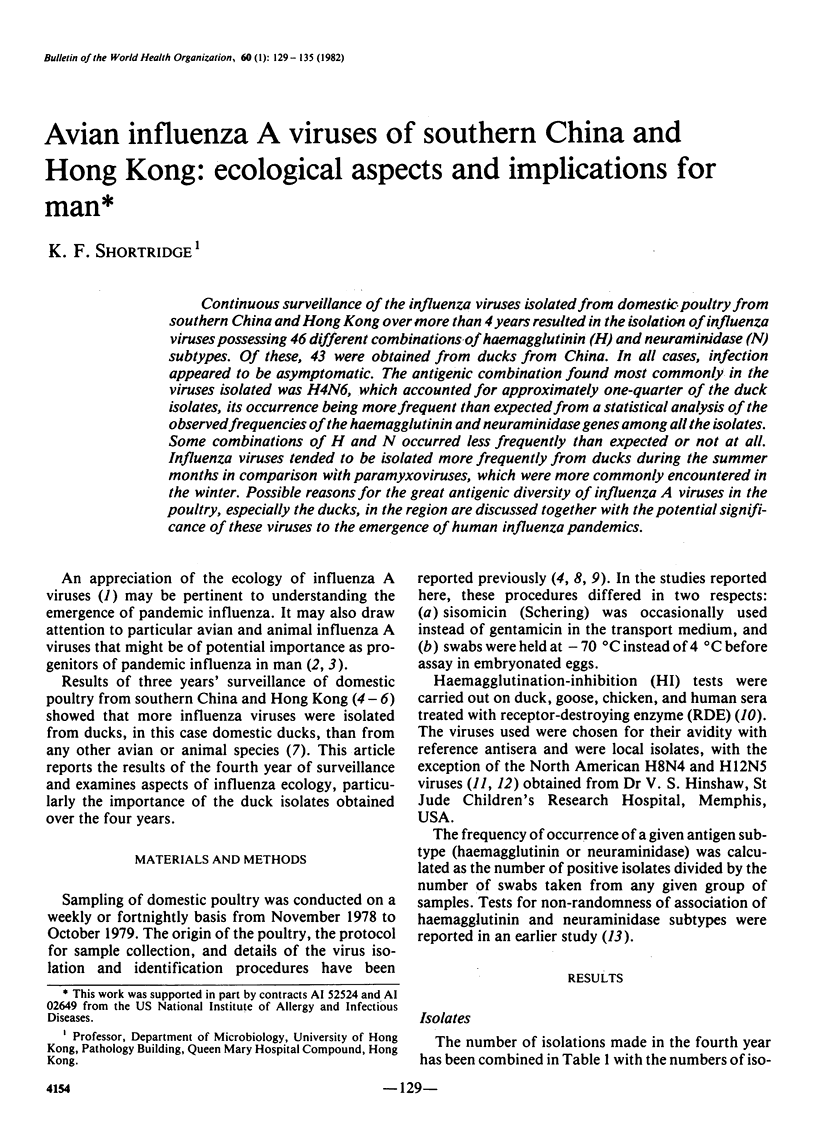
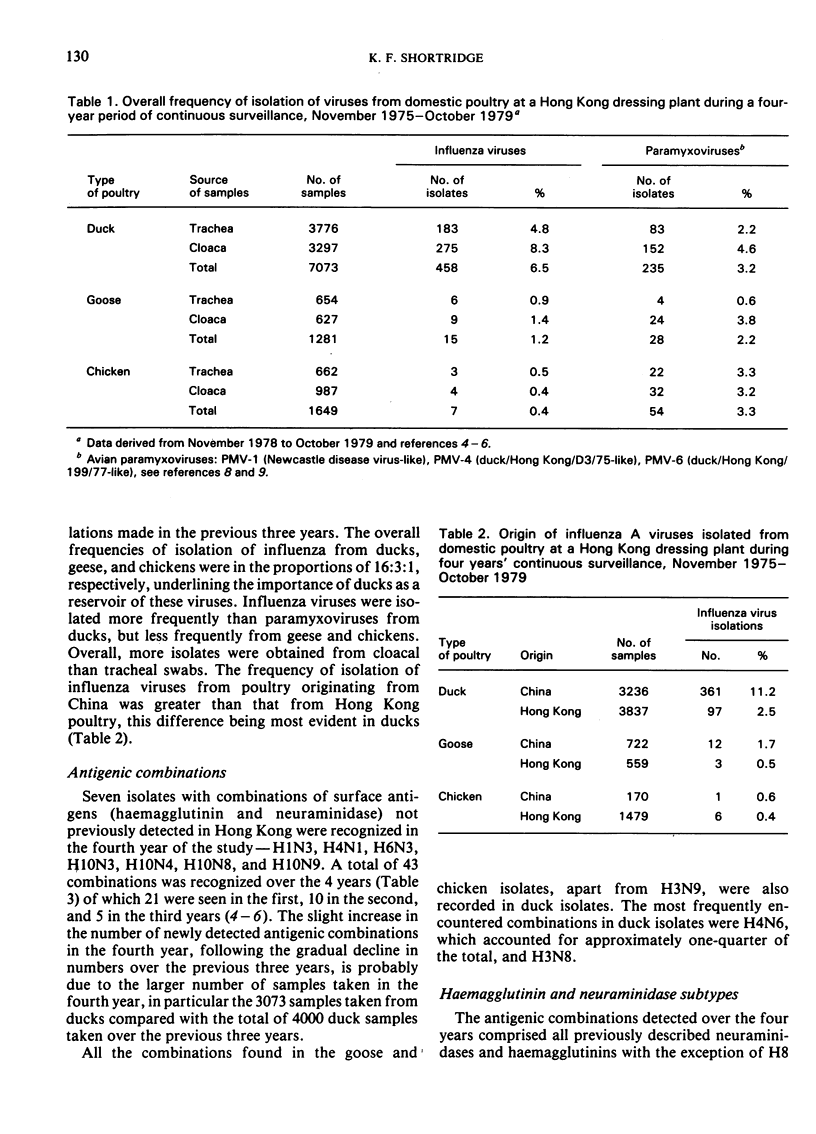
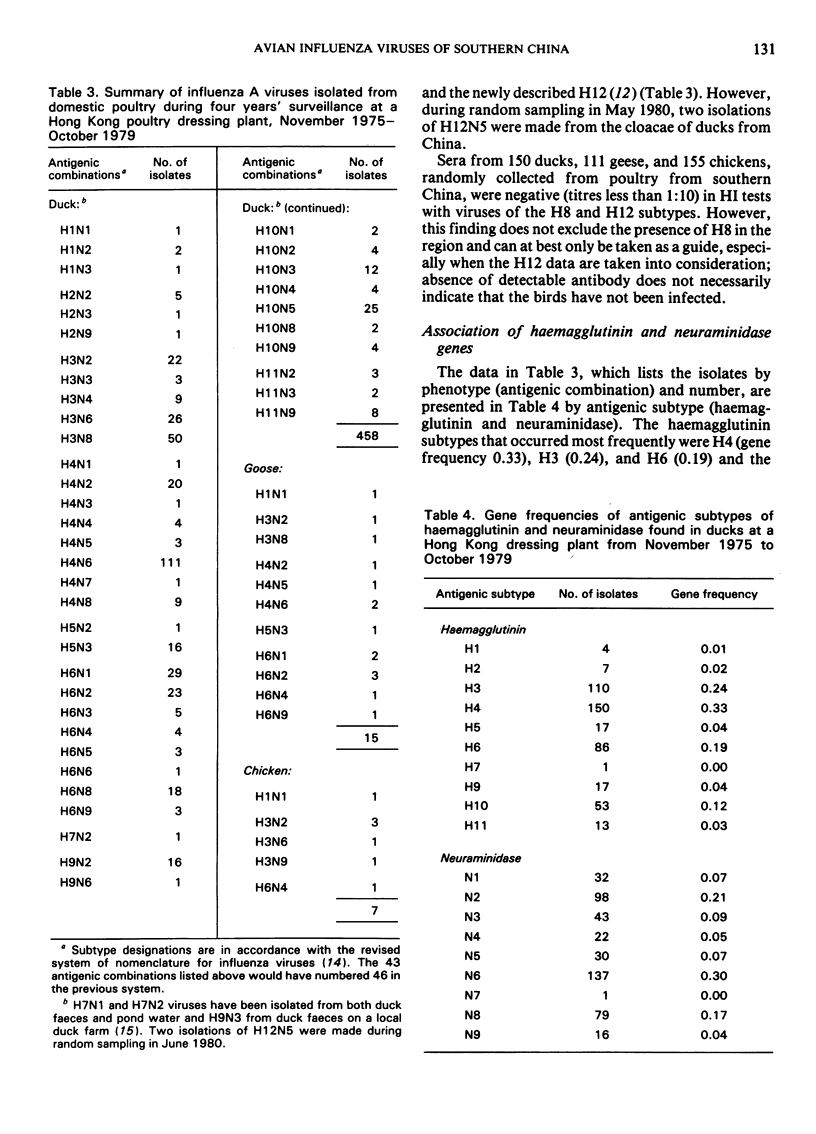
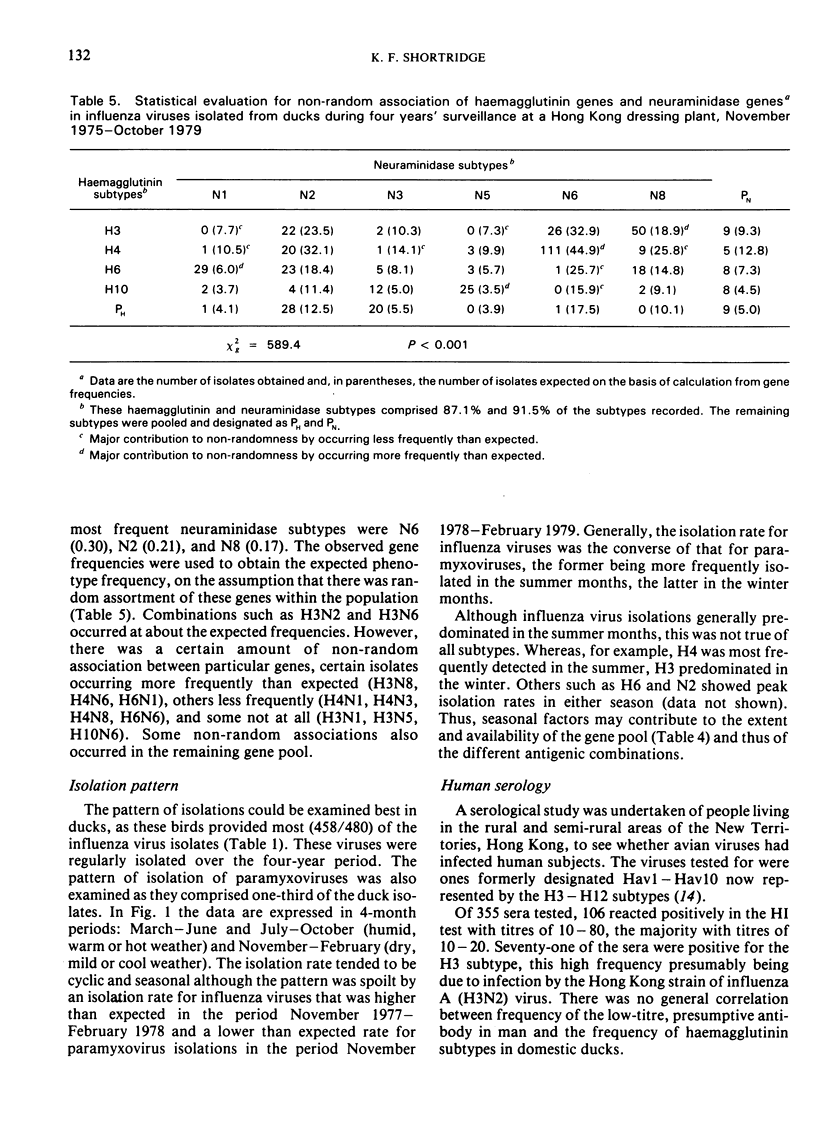
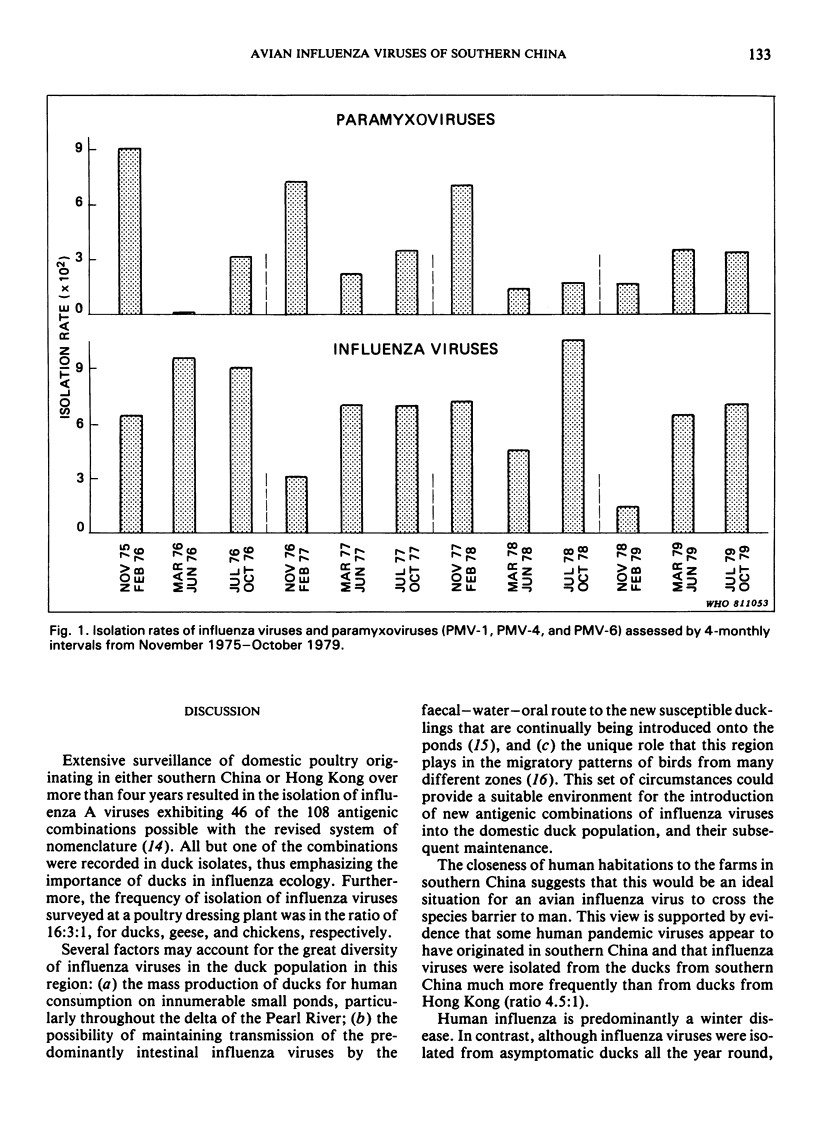
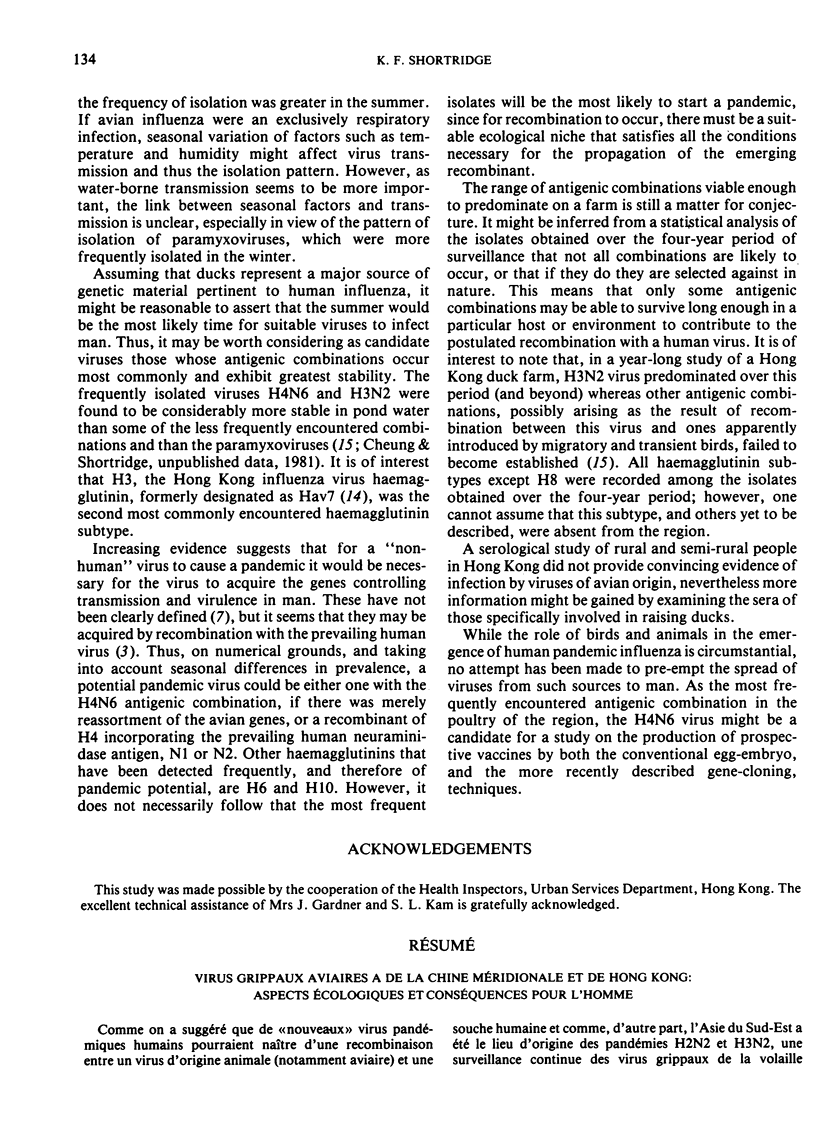
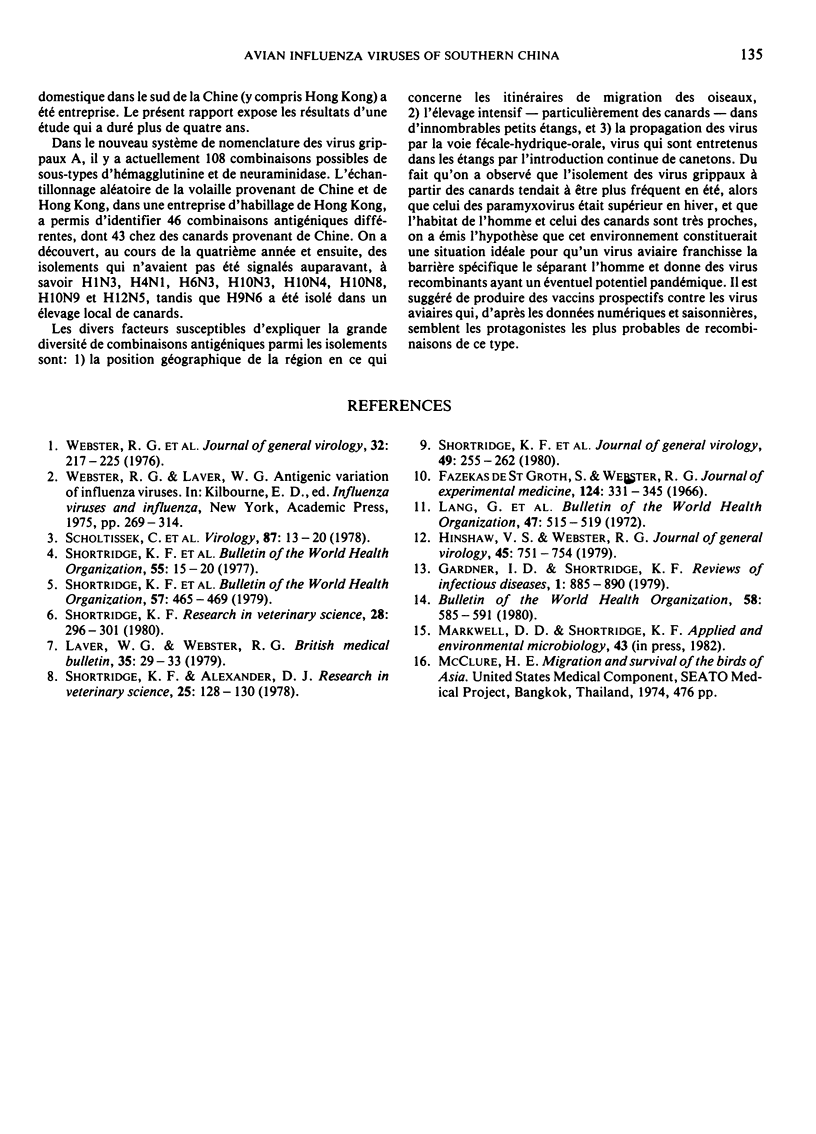
Selected References
These references are in PubMed. This may not be the complete list of references from this article.
- Fazekas de St Groth, Webster R. G. Disquisitions of Original Antigenic Sin. I. Evidence in man. J Exp Med. 1966 Sep 1;124(3):331–345. doi: 10.1084/jem.124.3.331. [DOI] [PMC free article] [PubMed] [Google Scholar]
- Gardner I. D., Shortridge K. F. Recombination as a mechanism in the evolution of influenza viruses: a two-year study of ducks in Hong Kong. Rev Infect Dis. 1979 Sep-Oct;1(5):885–890. doi: 10.1093/clinids/1.5.885. [DOI] [PubMed] [Google Scholar]
- Hinshaw V. S., Webster R. G. Characterization of a new avian influenza virus subtype and proposed designation of this haemagglutinin as Hav10. J Gen Virol. 1979 Dec;45(3):751–754. doi: 10.1099/0022-1317-45-3-751. [DOI] [PubMed] [Google Scholar]
- Laver W. G., Webster R. G. Ecology of influenza viruses in lower mammals and birds. Br Med Bull. 1979 Jan;35(1):29–33. doi: 10.1093/oxfordjournals.bmb.a071537. [DOI] [PubMed] [Google Scholar]
- Scholtissek C., Rohde W., Von Hoyningen V., Rott R. On the origin of the human influenza virus subtypes H2N2 and H3N2. Virology. 1978 Jun 1;87(1):13–20. doi: 10.1016/0042-6822(78)90153-8. [DOI] [PubMed] [Google Scholar]
- Shortridge K. F., Alexander D. J. Incidence and preliminary characterisation of a hitherto unreported, serologically distinct, avian paramyxovirus isolated in Hong Kong. Res Vet Sci. 1978 Jul;25(1):128–130. [PubMed] [Google Scholar]
- Shortridge K. F., Butterfield W. K., Webster R. G., Campbell C. H. Diversity of influenza A virus subtypes isolated from domestic poultry in Hong Kong. Bull World Health Organ. 1979;57(3):465–469. [PMC free article] [PubMed] [Google Scholar]
- Shortridge K. F., Butterfield W. K., Webster R. G., Campbell C. H. Isolation and characterization of influenza A viruses from avian species in Hong Kong. Bull World Health Organ. 1977;55(1):15–20. [PMC free article] [PubMed] [Google Scholar]
- Shortridge K. F. Isolation of ortho- and paramyxoviruses from domestic poultry in Hong Kong between November 1977 and October 1978 and comparison with isolations made in the preceding two years. Res Vet Sci. 1980 May;28(3):296–301. [PubMed] [Google Scholar]
- Webster R. G., Morita M., Pridgen C., Tumova B. Ortho- and paramyxoviruses from migrating feral ducks: characterization of a new group of influenza A viruses. J Gen Virol. 1976 Aug;32(2):217–225. doi: 10.1099/0022-1317-32-2-217. [DOI] [PubMed] [Google Scholar]


